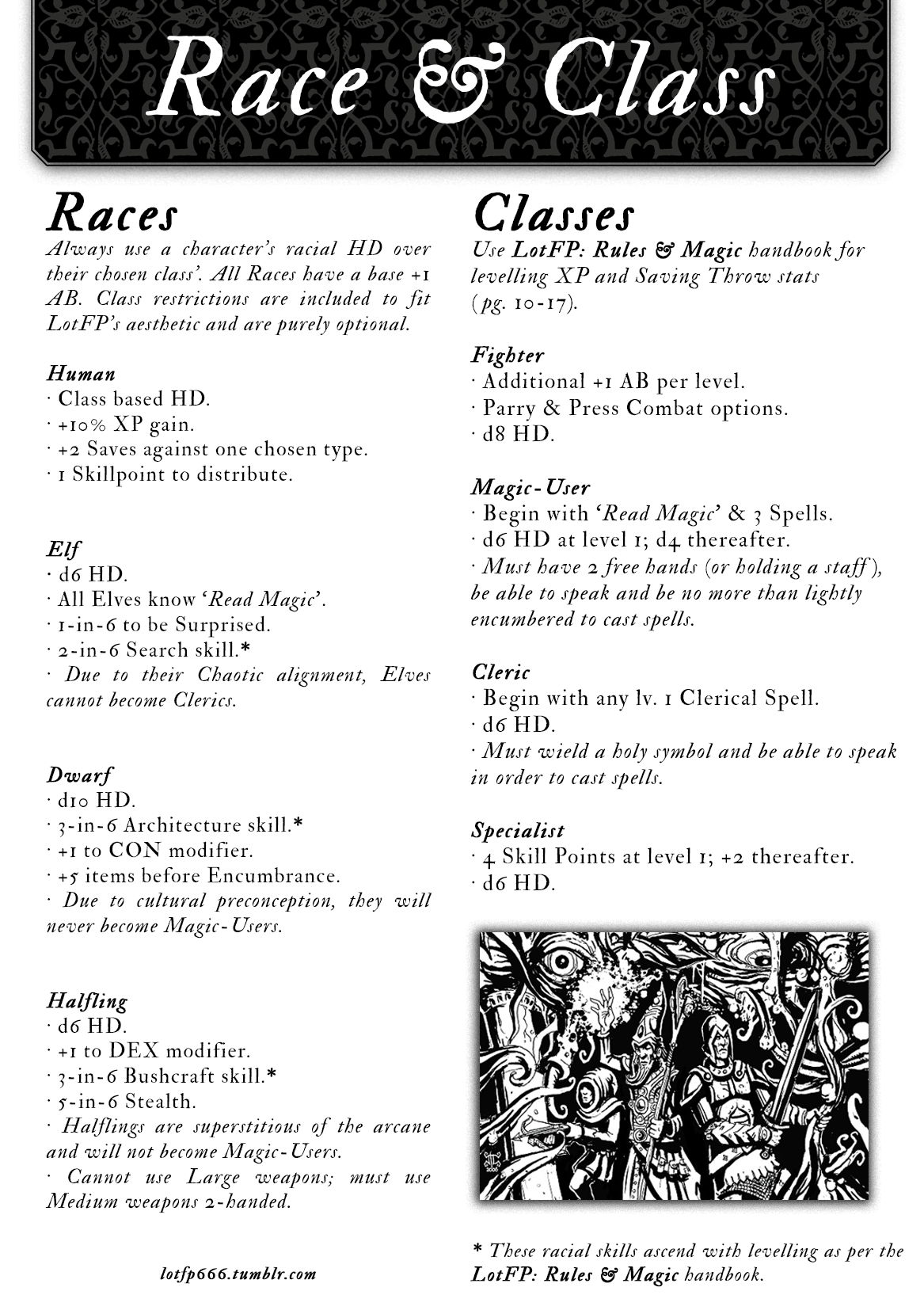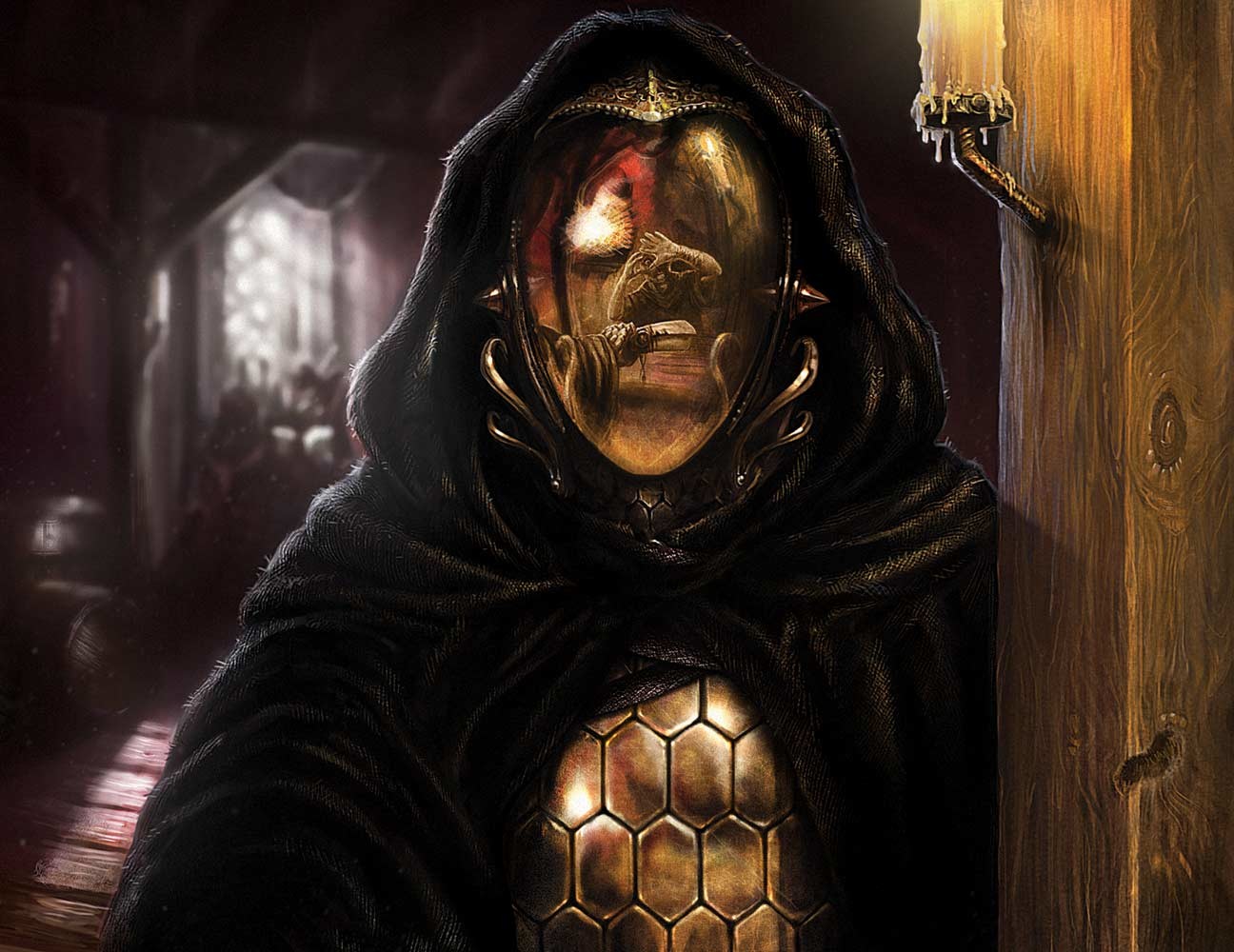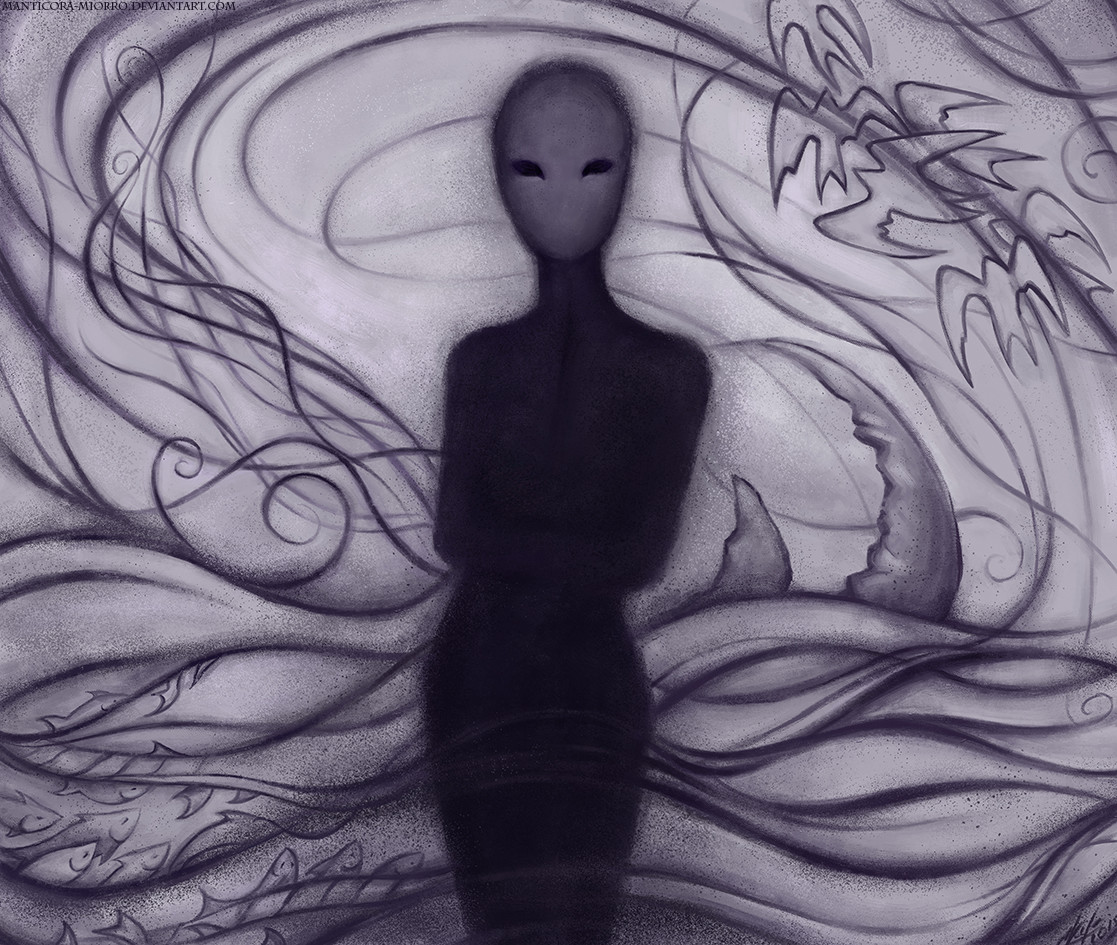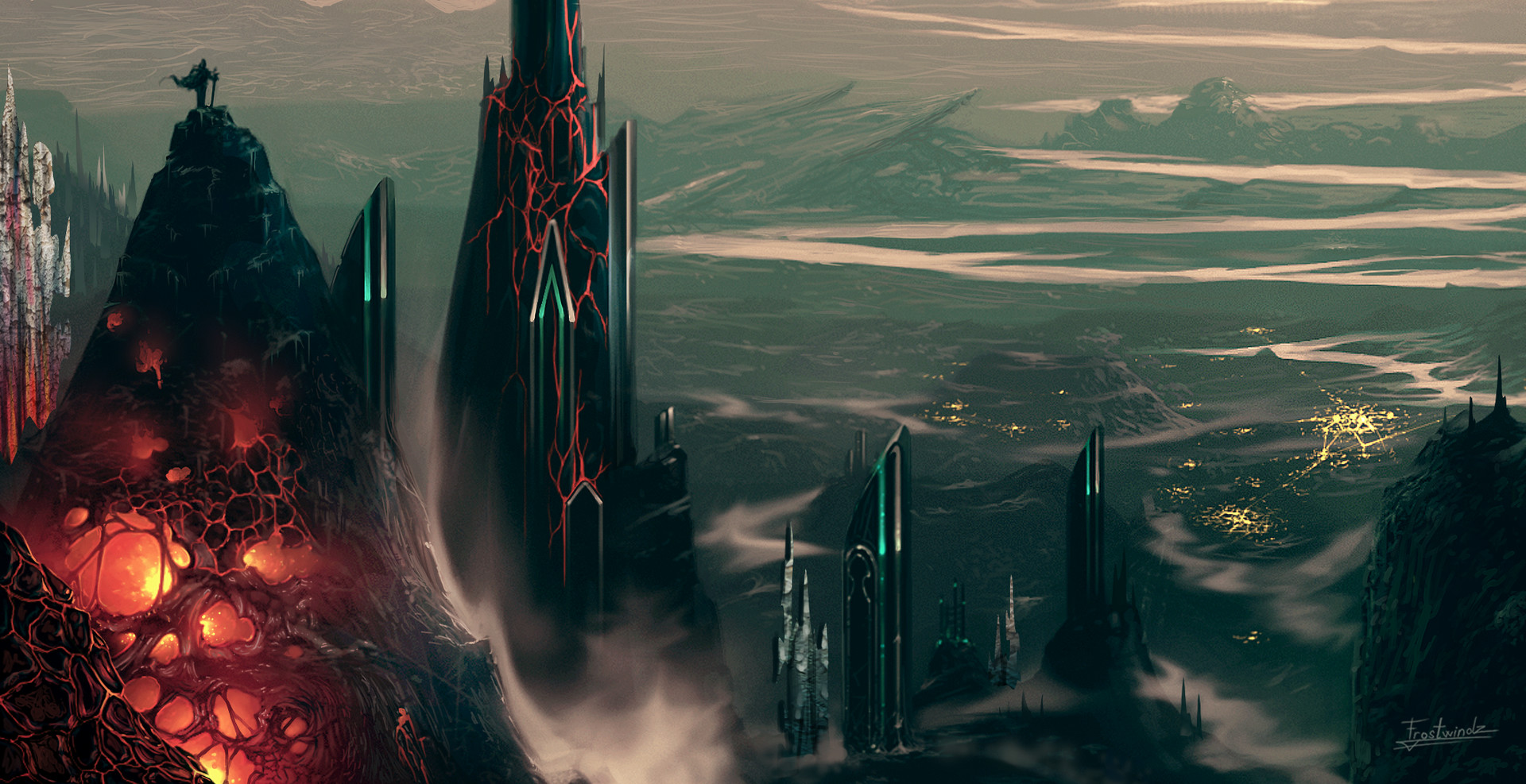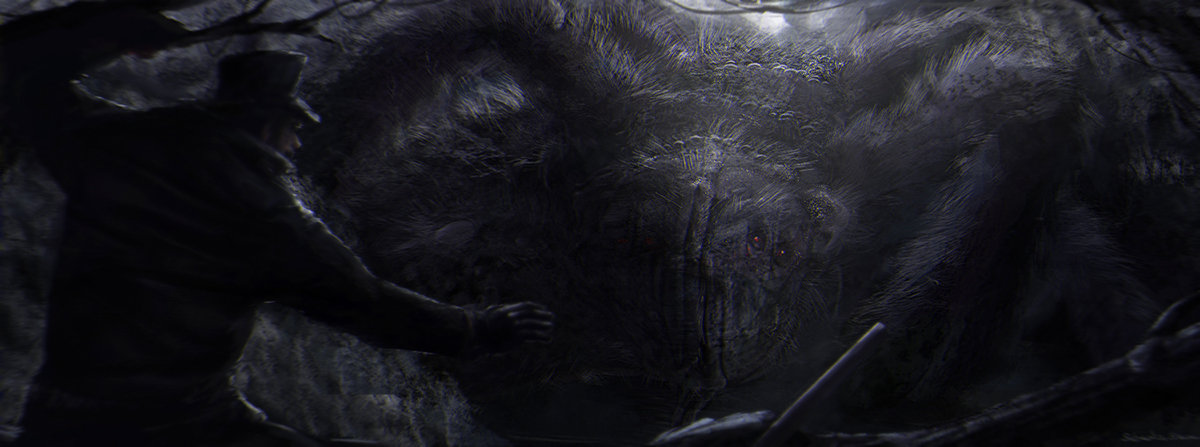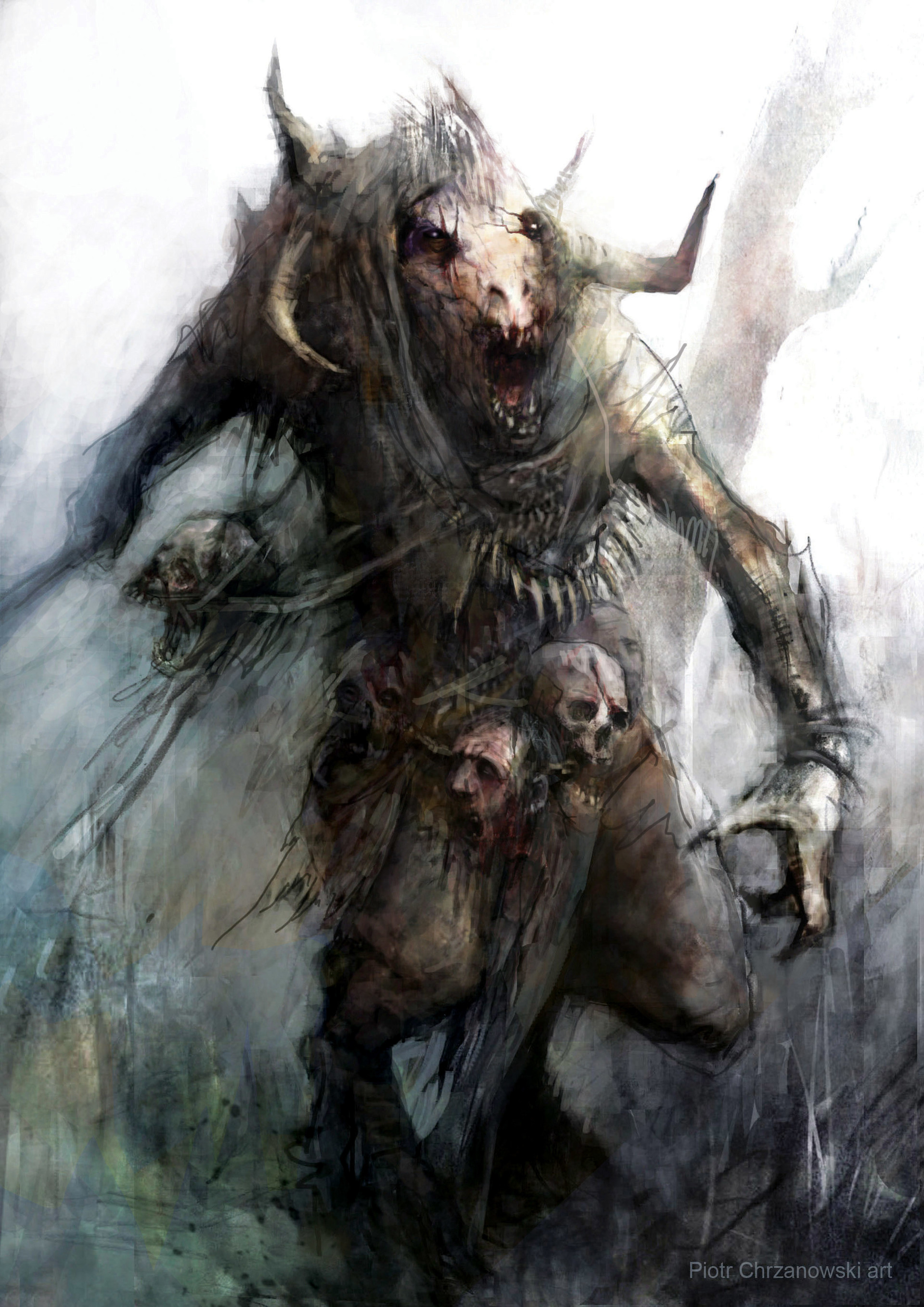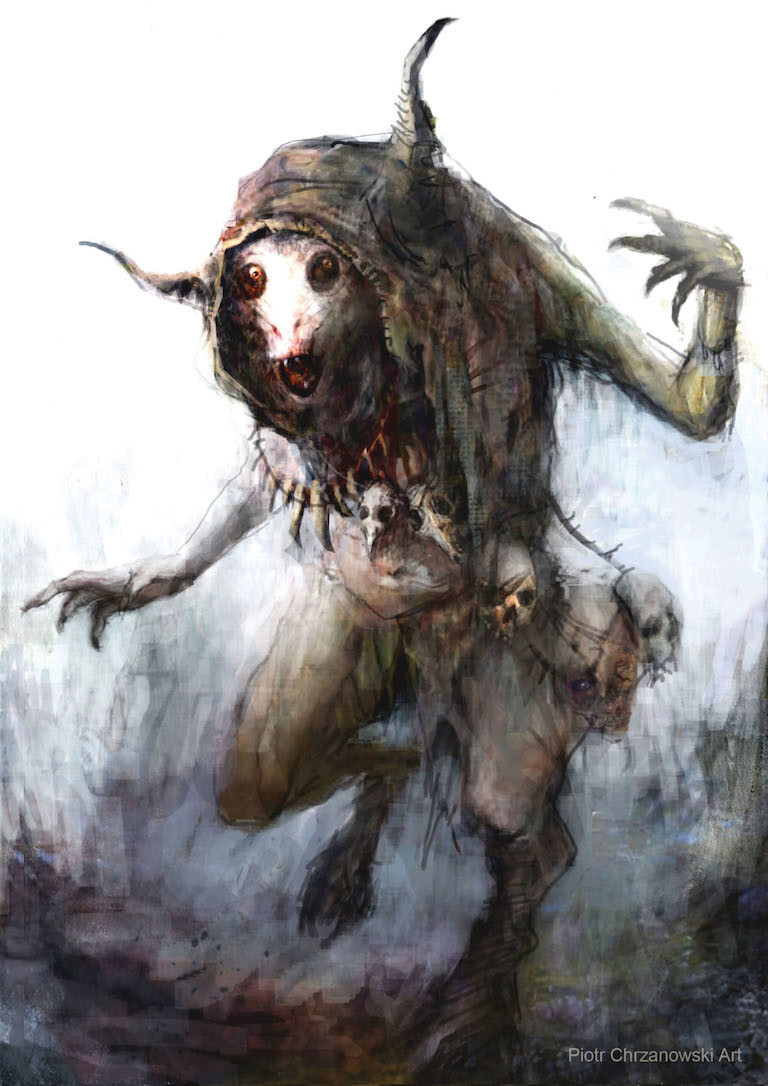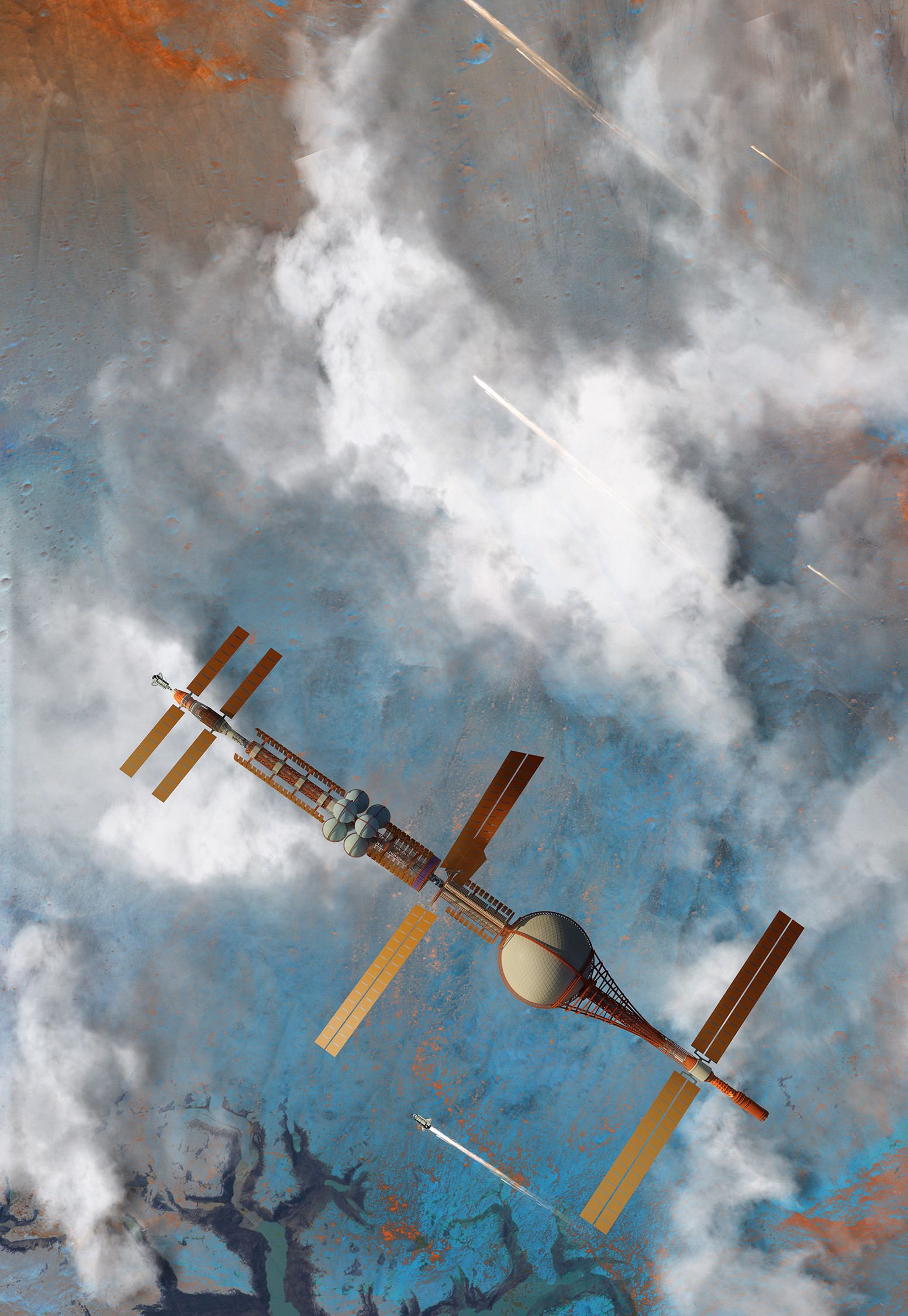Skerples over at the excellent
Coins and Scrolls has recently posted a set of answers to Jeff Rients' famous
twenty quick questions for your campaign setting. In a fit of genius or madness they also decided to answer Scrap Princess' slightly more eclectic
set of questions. I'll go ahead and throw my hat into the ring with the following, and will link to further posts of relevance as I write them.
JEFF'S QUESTIONS
1. What is the deal with my cleric's religion?
This is a bit of an open-ended one - there are a multitude of deities on Egradus, ranging from village harvest spirits to nation-spanning gods of incredible power. The main faiths are those of Xixher (fire will purge all darkness, the darkness conveniently being that which is not Xixher), Auric (gold and banks and interest and debts, especially the debts) and Yenta (whispers, secrets and mysteries).
The role of clerics on Egradus is more similar to a paladin - they are chosen by their deity and infused with their power for holy purposes. The majority of faiths bar them from holding any real rank as having someone who is literally a vessel of your god's divine will looking over your shoulder makes it harder to lie, cheat and embezzle, and when a cleric lies, cheats and embezzles they can say it was all part of the plan. Hence, adventuring and wandering clerics.
2. Where can we go to buy standard equipment?
At the very least you'd need to go to a large town, preferably a city. Villages and hamlets would have basic supplies and necessities but weapons and armour would be very expensive, if they were available at all.
3. Where can we go to get platemail custom fitted for this monster I just befriended?
You might have some luck finding a forward-thinking orcish smith-engineer in the city states of the Crescent Sea, but it would be best to go about this at night to avoid the questions and crossbow bolts of the militia.
Alternatively you could find a troll. A well-fed, polite, troll.
4. Who is the mightiest wizard in the land?
The High Academician of the Akornosian Academy of Natural Philosophy.
There was a mage of terrible power who went north to the Blightspire after ravaging Izoa with an army of abominations, but everyone forgot about him.
5. Who is the greatest warrior in the land?
This is a topic of much debate between the Ferrovia School, the Jade Sashes and Free Blade Guild, who all insist on their respective champions but shy away from contesting the matter.
Everyone else knows it's Kasim Thrice-Blessed, of Firze, but no one knows where he is.
6. Who is the richest person in the land?
Most definitely the High Usurer of the Gilded House - the temple of Auric, God of Coin.
The Pasha of Shaxecan and the Arch-Lector of the Church of the Sacred Fire vie for the distant second place.
7. Where can we go to get some magical healing?
Your best bet would be to head to a temple and see if any clerics are passing through.
Alternatively a mage might be able to help. This has its downsides.
8. Where can we go to get cures for the following conditions: poison, disease, curse, level drain, lycanthropy, polymorph, alignment change, death, undeath?
Clerics can deal with most of these but they are rather rare.
- Poison - your local cunning woman, pellar, apothecary or witch.
- Disease - priests of Radohir (though be careful they don't try and use you as some sort of weird incubator), apothecaries, barber-surgeons.
- Curse - witches, mages, priests, eldritch spirits.
- Level Drain - I don't use level drain in my games.
- Lycanthropy - Lycanthropes are very rare in my games, but mutation is infinitely more common and you will probably be set upon by a mob the moment you reach anywhere civilised. If you survive, maybe a mage? Though you'll likely just end up in a worse stage. You might as well go and live with the Beast-men.
- Polymorphy - Definitely a mage.
- Alignment Change - It's happened, deal with it.
- Death - See above. Although that copper-smelling man with the too-wide smile does have something interesting to say...
- Undeath - Please report to your nearest armed garrison for disposal. Thank you for your co-operation.
9. Is there a magic guild my MU belongs to or that I can join in order to get more spells?
The Order of the Carmine Web on Akornos is the most well-known. The more knowledge you acquire, however, the more rivals you gain.
Shaxecan boasts a large number of independent mage-engineers who are working on revolutionary discoveries.
10. Where can I find an alchemist, sage or other expert NPC?
Most cities will have at least a few alchemists, scholars and noted craftsmen. If you want the best, head to the Academy of Natural Philosophy on Akornos. Also, many of the learned guilds of the Yellow City in Yoon-Suin are reputed to have vast troves of knowledge stored in their ancient halls.
11. Where can I hire mercenaries?
Anywhere, if you have the coin. If you want mercenaries of quality you have several options - Shaxecan and the merchant cities of the Crescent Sea host several condotierri Free Shooter Companies of repute, Ithorun boasts boat-loads of fearless Elf-touched warriors, Namavskan pulks are known to be the finest light cavalry in the region, and Amon-Klari pikemen are renowned for their discipline under brutal conditions.
12. Is there any place on the map where swords are illegal, magic is outlawed or any other notable hassles from Johnny Law?
No Ithorunian will touch a sword. They fight only with spear, axe, club or bow.
Arcane magic will get you funny looks and the occasional mob lynching in Amon-Klar, but it isn't quite outlawed. Yet.
13. Which way to the nearest tavern?
There's one right over there!
14. What monsters are terrorizing the countryside sufficiently that if I kill them I will become famous?
There's the occasional war-kraken that is spotted in the Topaz Sea but the main holders of bounties and infamy will be Beast-man raiders in the civilised lands. Oh and there's the occasional dragon but good luck with that; they tend to keep to themselves anyway.
15. Are there any wars brewing I could go fight?
Amon-Klar is gearing up to dominate the Black Coast. Namavska encroaches on Balgoro. The Hundred Kingdoms continue their usual routine of endemic, brutal warfare.
16. How about gladiatorial arenas complete with hard-won glory and fabulous cash prizes?
You could become a clubfighter in Yoon-Suin if you don't mind permanent traumatic brain injury. Gangs in the lower levels of Ramliya will often run fist- and knife-fights for a pretty purse. More conventional gladiatorial combat is a popular spectator sport in the Ugishi Riverlands and the lawless reaches of the Wildmarch.
17. Are there any secret societies with sinister agendas I could join and/or fight?
Plenty! The Grey Halls of Yenta are constantly searching for new secrets, names and plots to squirrel away at their headquarters up in the heights of Ramliya. The Order of the Carmine Web are effectively the shadow government of Akornos and are searching for ever more powerful magical artefacts. Various sects and heresies crop up to plot against their Orthodox brethren. The Elves are doing Elf things.
18. What is there to eat around here?
Yoon-Suin has plenty of bugs, otherwise it's fairly standard fare. Food in the East is spiced and seasoned with various musky delights from the Sweet-Fever Land while food in the West tends towards more floral seasonings. If you're wealthy, anyway.
19. Any legendary lost treasures I could be looking for?
Oh absolutely! Better adventurers than you have tried.
20. Where is the nearest dragon or other monster with Type H treasure?
In a cave deep beneath the mountains. Though if they're down there they've made a bed of plutonium and you should probably avoid them.
SCRAP'S QUESTIONS
1. Is there weaponized Squid?
Weaponised squid are not commonly available. Squid-men could classify as weaponised as they are violently unfriendly and quite lethal.
Can I start with one?
No.
How much are they?
It's not so much a money thing as a rabid-xenophobia thing.
Can I have one as a pet/horse/best friend?
If you raised one, maybe.
Can I play one?
No.
Can I dual wield them?
If you're a god, maybe.
2. Is there undead robots?
Sort of. There are really old robots around and none of them really work right anymore. Some of them have been reactivated several hundred times over. Most of them don't have souls.
Can I play one?
Maybe, if you're in the right place.
Or have one as a pet or a gun that shoots them?
Again, maybe. The guns that shoot them are old and really beaten up, though.
Do Icebergs walk across the land?
Nope.
Can I be from one?
Nope.
Is godzilla frozen in one?
Something like Godzilla. But bigger, snake-ier and meaner. And with tentacles.
Can I play a godzilla?
Hell no.
4. What do birds know?
It depends. Swallows exist in all timelines at once so they know an awful lot but none of it makes sense. If you shrink yourself down enough you could hitch a ride into a parallel timeline and see for yourself.
The crows exist in a Cold War with cats - both of them vie for favour with the Grey Halls of Yenta, which they buy with secrets. The cats are currently ascendant. Experienced spies and saboteurs cultivate extensive contacts among the two species.
5. Does medicine work like it does here but no-one knows CPR or does it work like a cartoon so I cure amnesia with more head injurys or does it work like medieval euro people thought it did with demons in your teeth?
A little of all three, really. Most places are discovering rudimentary medicine but having enough humans in one place bends the rules a bit - what they believe to be true tends to become a bit more real, for both good and bad things. Sometimes there are demons in your teeth.
Do I start with demons in my teeth?
If you like. I wouldn't recommend it.
Do I know CPR?
Nope.
Can I invent CPR?
Another nope.
Can I give myself powers with additionally organs?
Hell yes!
What planet is in ascension in my spleen midmorning?
Oprade. Its green light enhances the bilious humours and calms the spirit. Do not worry about the pulsing sensation.
6. I want to play a hobbit but really I'm the fleas controlling the hobbit. Where is that in the book?
It's not in the book, sadly.
Could I take over a new guy with my fleas?
If the fleas were a thing, then probably.
Or another players guy?
I'd have to stop you there.
7. How much could I rent my body out to spirits before I lost control of my character?
Renting out the body is mostly an all-or-nothing thing, but it's well-regulated for the most part. It's renting out bits of your soul that you should be worried about.
What are the names of the spirits?
Some of them have familiar names and look like you, others have names that are colours and look like pain.
Are they cool?
It's a mixed bag. Demons tend to be very nasty unless they wear masks, but then it is impolite to refer to them as demons.
8. What level do I have to get my character to before I am the g.m?
I rule with absolute power.
Can I half be the g.m at an early level?
I'll take any help I can get!
What about when you leave the room?
I am an expert at retcons.
9. What is the dumbest thing I can spend my money on?
Probably sponsoring a peasant. Peasants are pretty stupid.
no dumber than that but cool. Like a pet with a pet with a weapon?
You could give the peasant a weapon... Congratulations, Olaf the Porter is now a hireling!
Can pets dual wield?
Dual-wielding is a thing - it gives a bonus to armour class or attack depending on how you do it.
10. How ugly can my guy be? Like Can I basically be a walking fish?
Really damn ugly. Maybe not
Charles II levels of ugly, but pretty ugly.
No wait I wanna be a walking fish. What is the reverse scuba technology like in this world?
If you're in the right place you could create a Fish-man character. They can walk on land without issue
11. The lamp oil? Is that like cooking oil, kerosene, white spirits or napalm?
On Izoa it's mostly flax-seed oil. Seal blubber is more common in Ithorun and fish oil is common in Oloris.
How much can I buy of it?
Depends on the coin - barrels of the stuff are pricey, but flasks are a lot more affordable.
12. How does physics work in this world?
Much like it does in ours, which is not as intended. Also there's a parasitic microuniverse of pure entropy latched on somewhere in the mix.
What makes the planets stay up?
Momentum and gravity.
Are there planets?
There are!
Is it elves?
Elves have to obey the laws of physics just like everything else. Well, not quite everything...
Can I play an elf from another planet?
In the right circumstances, yes!
Does everything work like how we though it did in the past?
It depends what you mean by that. If you get enough humans in a single place then sheer belief tends to bend the rules a bit.
Can I discover stuff and pass it off as a magic?
Real magic users would suss you out pretty quickly, but sure.
Is possible to use the scientific process to organise the concepts of magic?
That's what the adherents of the nascent doctrine of natural philosophy are attempting! They're making a lot of mistakes and don't know what the scientific method is, but they're trying. It may or may not be possible.
13. Can I start with weapon hands?
If you start in Yoon-Suin you can be a Crab-man, so possibly! If you really wanted you could sacrifice a hand and have a cleaver or something fixed to the stump.
What about crab claws?
See above!
Can I play a crab with human hands?
A man sized-crab or a crab-sized crab? The former, no, the latter, maybe.
Can I have one as a pet?
Crab-men in Yoon-Suin are generally chattel property.
Do they live on a different planet?
Some crabs do, not Crab-men though.
Can we go there?
That depends on how well you handle hard vacuum.
14. What cultures approve of cannibalism?
It's not so much approved of as tolerated in Ithorun, where official duels end up with the (dead) loser being eaten by the victor.
Terogor happily feasts on disciples of the Sacred Fire.
What about if we are super rich?
If you meet the above criteria, sure.
Aren't rich cannibals be default , I mean if you think about it?
You could make an argument for that, though it depends on how desperate the poor are for food.
How is the class struggle here anyway?
No outright class struggle but the emergence of a solid middle class is upsetting the old order, especially around the Crescent Sea.
Is there a Karl Marx?
Not in the sense of someone arguing for a revolution of the proletariat. There isn't really a proletariat, actually.
How receptive are people to the ideas of anarcho-syndicalism here?
Most of them would find the concept alien and dangerous.
15. Can my character not be real , but a hallucination of another character?
Flesh and blood characters only, I'm afraid. You might end in an incorporeal form though.
But I still wanna be able to do stuff. What are the stats for that?
No stats for that.
16. Which is the rome but with lava fire country in this world?
That would be the Kothen Imperium, but it doesn't exist any more and there's a sea where most of it used to be.
What about the ice circus country?
Far to the south lies a land of ice and snow, called the Rimelands. Explorers have encountered wondrous things and places but no legible maps exist. Also most of the explorers die or disappear.
Can I have a pet from there?
If you managed to capture and tame something, sure.
17. Can I invent an insect?
By all means, I love it when players come up with extra world details.
as a player like right now I tell you an insect and you put it in the game?
Absolutely.
Or as a character?
Either/or, I'm not fussed.
Can my spells be insects that then exist in this world after I cast them?
Each mage perceives their spells in a different way. It's possible that one mage perceives their magical talents as a horde of insects burrowing and nesting in their brain.
Can I play an insect who is actually a spell cast in this world?
No.
What about as a pet?
Having a pet insect? Sure thing.
18. Is there reverse fire?
Like fire, but cold? Sort of. Xixher's priests claim to be able to make ur-fire - fire that is more real than any other flames in the world. Those who feel it claim it chills their soul but leaves their flesh unmarked.
What about reverse water or earth?
Mages can make airy water that is breathable and actually accelerates fires. Explorers who have travelled to the far north report that chunks of land can be seen orbiting the Blightspire.
What do they wear there?
On reverse Earth? There are many parallel worlds and they wear all kinds of things - myconium sponge robes, chitin plates, humanoid skin...
19. How much money can I make inventing siege engines?
A pretty penny, though you have competition from orcish gunsmiths making cannons and mortars and human mage-engineers making warp-lightning cannons, wytchfire throwers and war golems.
Can I play a siege engine?
Given that they're generally inanimate objects, no.
In what ways are animals used in siege engines?
They haul them or are fired out of them.
20. What is the most significant tree to the economy of the starting place?
Good question. Probably oak, especially in a maritime region. White birch is beloved by many in the harsh frontiers of Oloris.
Is it really a tree or maidens stitched together?
They're really trees. Sometimes a druid might go into hibernation in a hollow beneath the roots of a tree. Sometimes they hibernate for a really long time and are consumed by the roots, entering a sort of waking dream within the tree.
If I play a maiden do I get spells or do people that worship me get spells but only if I'm mad at them?
If you're a maiden who happens to be a mage then you'll get spells. You'll need to attract a reasonable number of worshippers and accrue a fair amount of power before you can grant spells to others, though.
